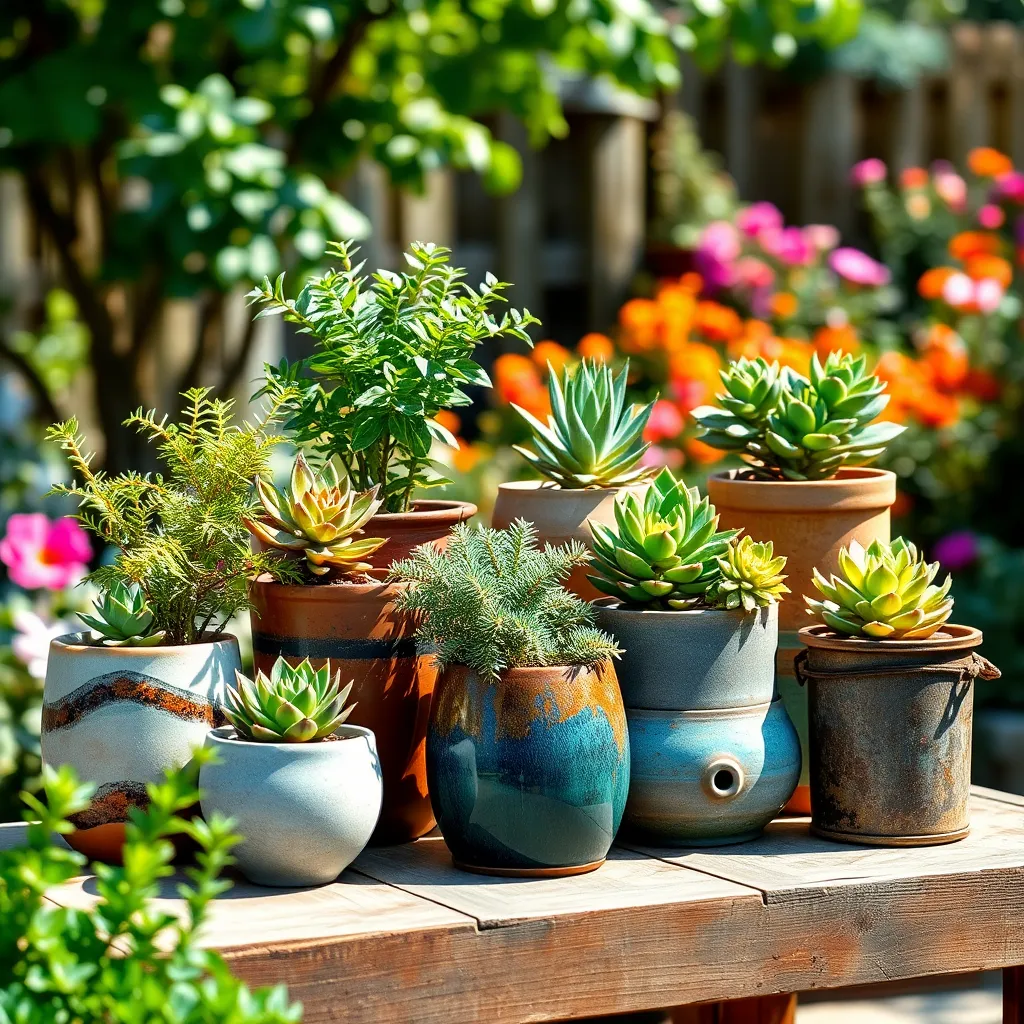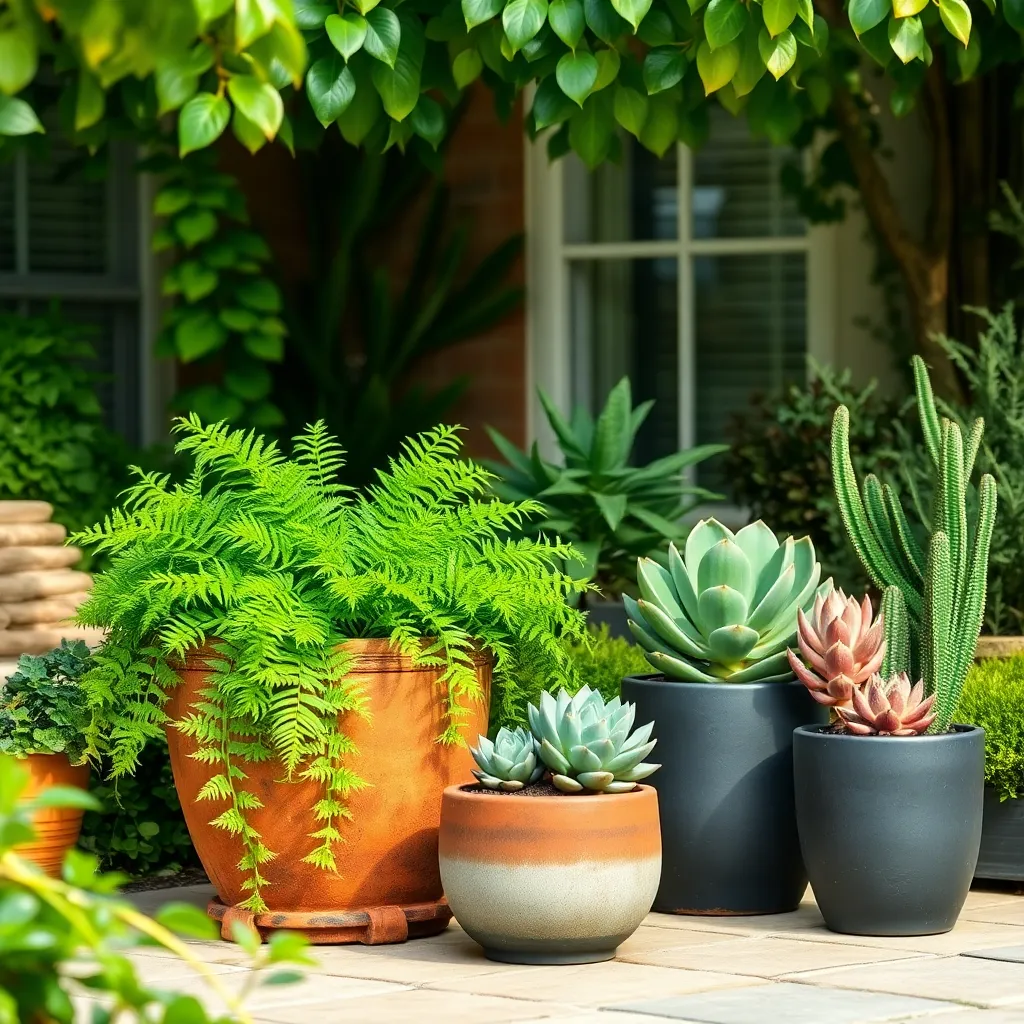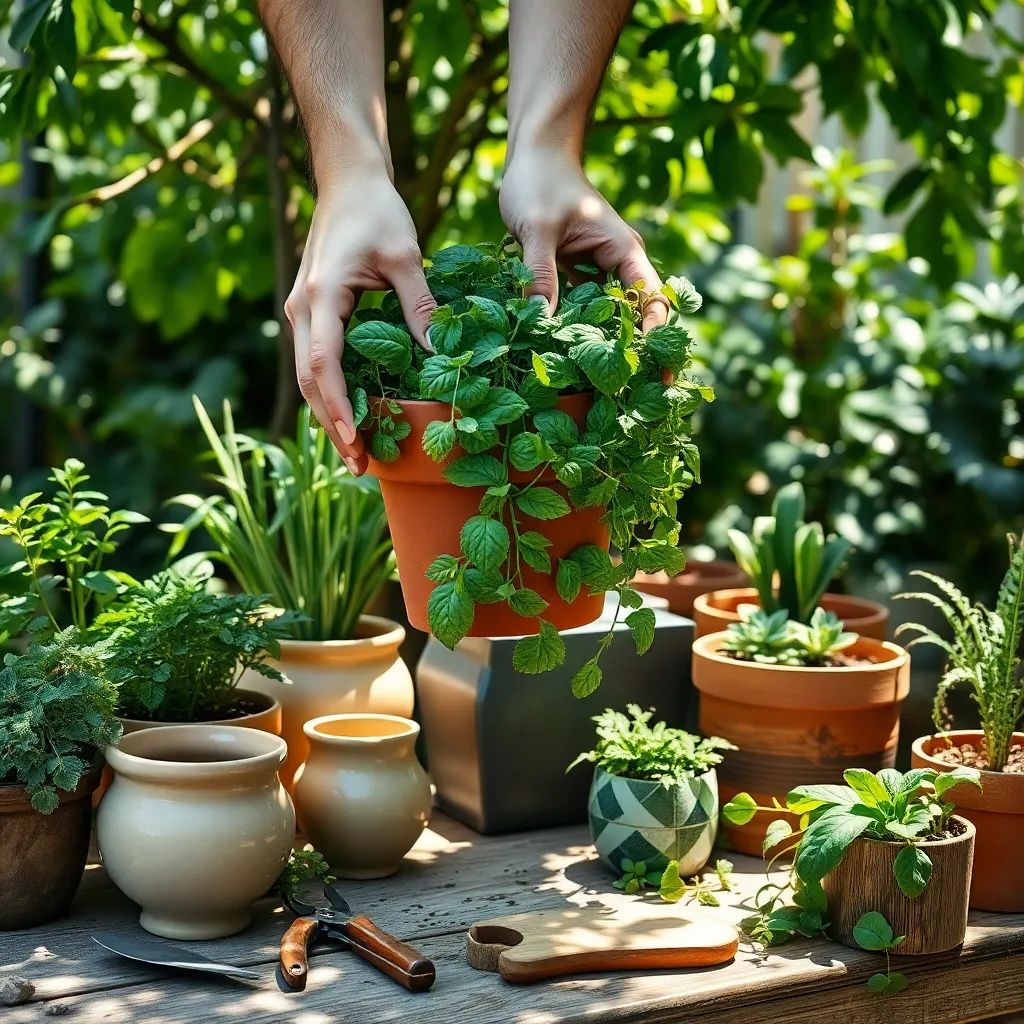Embarking on the rewarding journey of gardening or enhancing your existing green space often begins with the simple yet significant choice of pots for your plants. Whether you’re a novice gardener just getting your hands dirty or a seasoned grower with a thriving garden, selecting the right container is crucial for a flourishing plant life. Pots aren’t merely vessels; they are the foundation of your plant’s environment, impacting both growth and aesthetics. Understanding the nuances of pot selection can transform your gardening experience, paving the way for healthier plants and a more vibrant garden.
In this article, we will dive into the details of choosing the perfect pots that cater to the unique needs of your plants while aligning with your personal style. You’ll discover how factors like material, size, and drainage can dramatically influence plant health and growth. From the rustic charm of terracotta to the lightweight appeal of plastic, each pot type has its own benefits and considerations. Together, we’ll explore the balancing act between functionality and style, ensuring your plants not only survive but thrive in their new homes.
Choosing pots goes beyond mere aesthetics, as they play a pivotal role in managing moisture, temperature, and root development. As you read on, you’ll gain insights into matching pots with the right plants, understanding how certain pot characteristics can enhance or hinder growth. We’ll also provide practical tips on how to avoid common pitfalls, ensuring that your plant’s new abode is perfectly suited to its botanical needs. Whether you’re crafting a cozy indoor oasis or a lively outdoor retreat, this guide will empower you to make informed decisions that elevate your gardening endeavors.
Assess Plant Size Requirements

Choosing the right pot size is crucial for plant health and growth. Start by considering the mature size of your plant, as this will guide you in selecting an appropriately sized pot.
For beginners, a general rule is to select a pot that is 1-2 inches larger in diameter than the current plant size. This allows room for growth and ensures the roots have enough space to expand, promoting healthy development.
When it comes to advanced gardening, understanding root systems is key. Plants with deep root systems, like tomatoes, thrive in deeper pots, while shallow-rooted plants such as succulents do well in smaller, more shallow containers.
Drainage is a critical consideration regardless of the pot size. Always choose pots with drainage holes to prevent waterlogging, which can lead to root rot and other health issues.
Select Appropriate Pot Material

When choosing the right pot material for your plants, consider the specific needs of your plant and your local climate. Ceramic and terracotta pots are excellent for plants that prefer drier conditions because they are porous and allow moisture to evaporate more quickly.
For those in hot or dry climates, plastic pots are a practical choice because they retain moisture longer, reducing the need for frequent watering. They are also lightweight, making them easier to move, which is especially beneficial for larger plants that may need repositioning to follow the sun.
Concrete pots offer durability and can provide excellent insulation for roots, keeping them cooler in the heat of summer. However, they can be quite heavy, so they work best for plants that will remain in a fixed location, such as on a patio or in a garden corner.
Consider using metal pots if you want a modern aesthetic and are growing plants that appreciate warmth, as metal can heat up quickly in direct sunlight. Ensure they have adequate drainage, as metal pots typically don’t allow water to escape as easily as porous materials do.
Consider Drainage Needs Carefully

Proper drainage is crucial to the health of your plants, as it prevents water from accumulating at the roots. When selecting pots, ensure they have adequate drainage holes at the bottom to allow excess water to escape. Container gardening requires a balance between moisture retention and drainage, which can be achieved by choosing the right potting mix. A high-quality potting mix often contains materials like perlite or vermiculite, which improve drainage and aeration.
Consider the specific needs of the plants you are potting, as some prefer drier conditions while others thrive in more moisture. For example, succulents and cacti need well-draining pots, often benefiting from a sandy, gritty soil mix. To enhance drainage further, you can place a layer of small stones or pebbles at the bottom of the pot. This simple step can help prevent water from pooling and causing root rot.
For those growing plants indoors, selecting pots with saucers can help manage excess water and protect surfaces. However, be mindful to empty the saucers regularly to prevent waterlogging. If your chosen pots lack drainage holes, consider drilling them yourself or using them as decorative outer containers with an inner pot that has proper drainage. This method allows for both aesthetics and function, ensuring your plants remain healthy.
Advanced gardeners might experiment with self-watering pots, which can be especially useful for maintaining consistent moisture levels. These pots are designed with a reservoir at the bottom, allowing plants to absorb water as needed. Regardless of your choice, always monitor your plants for signs of overwatering or underwatering, adjusting your care routine as necessary. With these drainage considerations in mind, you’ll be well on your way to a thriving container garden.
Match Pot Style to Environment

Choosing the right pot style for your environment can greatly influence the health of your plants. Consider factors such as light exposure, humidity, and temperature when selecting pots to ensure that your plants thrive.
For outdoor settings, terra cotta pots are excellent due to their porous nature, which allows soil to breathe and prevents root rot. However, they dry out faster, so you may need to water your plants more frequently, especially during hot weather.
In contrast, plastic pots retain moisture longer and are ideal for indoor plants or areas with low humidity. They are lightweight and come in various colors and sizes, making them versatile for different plant types and spaces.
Metal pots add a modern touch and are durable, but they can heat up quickly in direct sunlight, risking root damage. To mitigate this, use metal pots indoors or ensure they are shaded, and consider lining them with a protective layer to insulate roots.
For gardeners in regions with fluctuating temperatures, consider using ceramic pots which provide better insulation for plant roots. Be mindful of their weight and fragility, and ensure they have adequate drainage to prevent waterlogging.
Evaluate Pot Weight and Mobility

When selecting pots for your plants, it’s crucial to consider the weight of the pot, especially if you plan to rearrange your garden often. Heavy pots can be difficult to move, limiting your ability to adjust your garden layout or bring plants indoors during harsh weather conditions. Consider the materials of the pot; for instance, ceramic and concrete pots are heavier compared to plastic or fiberglass options. Opting for lighter materials can save you the hassle of moving a heavy pot, while still providing stability for your plant.
If you do select a heavier pot, think about using wheeled plant stands or caddies to increase mobility. These tools allow you to shift your plants easily without straining your back, particularly if you have larger pots in your collection. Additionally, ensure that the weight of the pot is suitable for the type of plant you are growing. For example, tall plants or those with extensive root systems may require a sturdier, heavier pot to prevent tipping.
For gardeners with limited physical strength or mobility, lighter pots can be a game-changer. Plastic pots are not only light but also affordable and come in a variety of sizes and styles to suit different plants and aesthetics. A practical tip for beginners is to place a few rocks at the bottom of lighter pots to improve drainage and stability, ensuring that your plants stay healthy and upright.
Advanced gardeners might consider using self-watering pots, which are slightly heavier due to their built-in reservoirs but offer the added benefit of reducing watering frequency. These pots are particularly useful for plants that require consistent moisture, such as tomatoes and other fruiting plants. By understanding the balance between pot weight and plant requirements, you can create a more flexible and successful gardening environment.
Conclusion: Growing Success with These Plants
In nurturing the bond between your plants and their homes, this article explored five essential relationship concepts: understanding your plant’s specific needs, choosing the right material for pots that complements those needs, ensuring proper drainage to avoid overwatering, selecting the right size to allow growth, and considering aesthetics to enhance your living space. These insights not only guide you in making informed decisions but also strengthen the connection between you and your leafy companions.
As your actionable next step, take a moment to assess your current plant-pots setup. Are there any mismatches in size or material? Make a plan to address these and give your plants the optimal environment they deserve.
Remember, a little attention to detail today can lead to flourishing relationships tomorrow. Save or bookmark this article as your go-to guide for all things plant-pots, ensuring you have a resource at hand for future plant care decisions.
With these principles in mind, you’re well on your way to not only healthier plants but also a more harmonious living space. Embrace the journey of growth, and watch as your efforts cultivate thriving relationships and a vibrant home environment.

